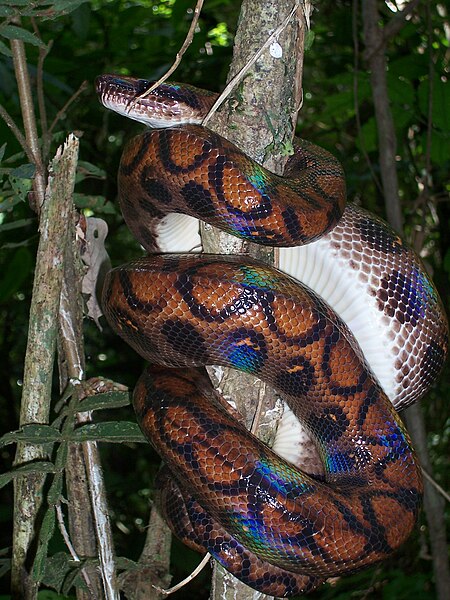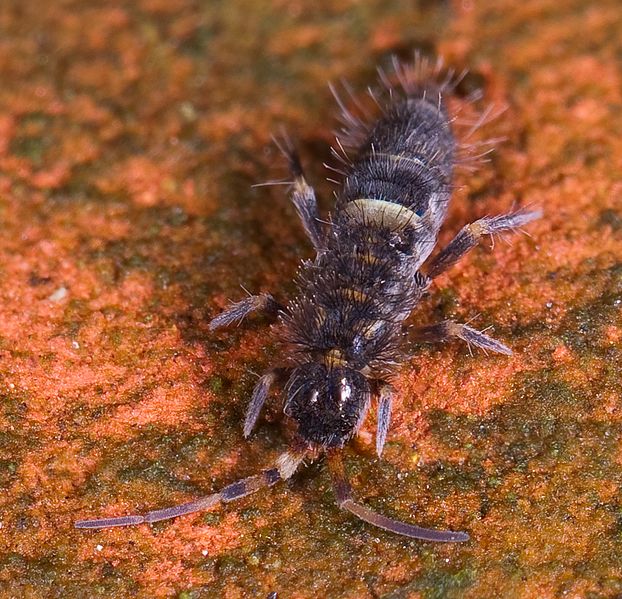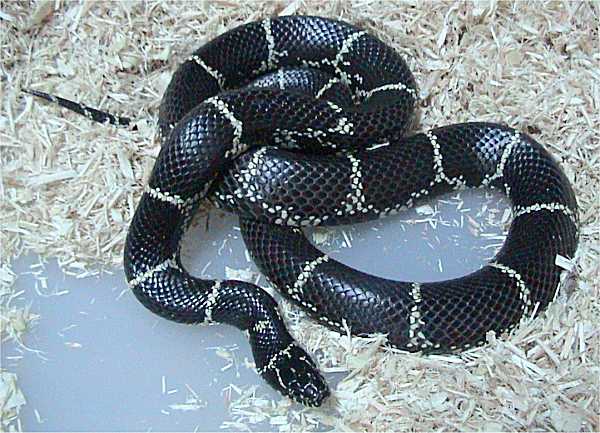 I usually recommend that aspiring snake breeders start off with live-bearing species, so as to avoid the necessity of incubating eggs. In the Family Boidae we find a wide range of possibilities, one of the most popular of which is the beautiful Rainbow Boa (Epicrates cenchria). Although not as widely kept as its much larger cousin, the Boa constrictor, the Rainbow Boa is far easier to manage in captivity, yet grows large enough (to nearly 7 feet in some cases) to satisfy those who prefer sizable snakes.
I usually recommend that aspiring snake breeders start off with live-bearing species, so as to avoid the necessity of incubating eggs. In the Family Boidae we find a wide range of possibilities, one of the most popular of which is the beautiful Rainbow Boa (Epicrates cenchria). Although not as widely kept as its much larger cousin, the Boa constrictor, the Rainbow Boa is far easier to manage in captivity, yet grows large enough (to nearly 7 feet in some cases) to satisfy those who prefer sizable snakes.
Range and Diversity
Eight subspecies of Rainbow Boa range throughout much of Central and South America (Panama to Northern Argentina).
Black rings on a rich red-orange background mark the most highly desirable of these, the Brazilian Rainbow Boa (E. c. cenchria). The somewhat duller but still attractive Columbian Rainbow Boa (E. c. maurus) is more commonly available. Both of these snakes, and the remaining subspecies, may be bred in a similar manner.
Selection of Breeding Stock
Although occupying a wide range of habitats, Rainbow Boas from all locales usually respond well to similar breeding techniques. Captive-bred animals are easier to work with than wild-caught individuals, as the “internal clocks” of wild snakes may conflict with local conditions – wild-caught animals will usually reproduce only during their normal breeding season, and after being exposed to a very close simulation of natural conditions (rainfall, temperature, etc.).
Potential breeders should be robust, at least 3 years of age and approximately 5 feet long, so that sexual maturity is assured. Small and/or young females often give birth to a high percentage of stillborns.
Stimulating Reproduction
Despite their tropical origins, Rainbow Boas selected for breeding should be subjected to a 6 week cooling-off period, at temperatures of 68-70 F. Over much of their natural habitat, such temperature dips are associated with rainy periods. Increased misting may, therefore, help spur reluctant breeders, but care must be taken that the snakes dry off completely, lest fungal skin infections take hold.
Snakes slated for cooling should be fasted for 2-3 weeks beforehand (undigested food in the gut of a cool snake will spoil and likely kill the animal). A water bowl should be available during their artificial “winter”.
At the end of the cool period, temperatures should gradually (over a 10 day period) be raised to 78-85 F, with a basking site of 92 F. Females give birth 6-8 months after copulation, and produce an average of 10 young per litter (the range is 1 to 25). Newborn Rainbow Boas are large enough – 14 to 24 inches – to take fuzzies or small mice as a first meal.
A Note Concerning Diet
I’ve found that Rainbow Boas often refuse favored foods after a time. Usually, a switch from mice to rats, or vice-versa, gets them started again.
Rainbow Boas usually relish chicks, and may take gerbils, hamsters and other rodents, but these should not be used unless a steady supply is available. Snakes that “fixate” on a difficult-to-obtain food can be trouble. I once worked with an anaconda that refused all food but muskrats, another which took only wild-caught Norway rats, and several that “demanded” ducks.
Further Reading
Information on the natural history of the Brazilian Rainbow Boa and other creatures that live in its habitat may be found in the newsletter of The Amazon Conservation Association.
A video of a nicely colored young Brazilian Rainbow Boa is posted here.
Peruvian Rainbow Boa image referenced from wikipedia and originally posted by Damien Farrell
 That Reptile Blog – Reptile, Amphibian and Exotic Pet Care and Information
That Reptile Blog – Reptile, Amphibian and Exotic Pet Care and Information

 The diets of captive Poison Frogs (Dendrobates, Phyllobates, Oophaga), Mantellas, small salamanders (i.e. Red-Backed Salamanders) and tiny, newly-transformed amphibians are usually limited to the two readily available foods of appropriate size – pinhead crickets and fruit flies. The minute, wingless insects known as Springtails (Order Collembola) are easy to procure and rear, and offer a convenient means of increasing dietary variety for small amphibians.
The diets of captive Poison Frogs (Dendrobates, Phyllobates, Oophaga), Mantellas, small salamanders (i.e. Red-Backed Salamanders) and tiny, newly-transformed amphibians are usually limited to the two readily available foods of appropriate size – pinhead crickets and fruit flies. The minute, wingless insects known as Springtails (Order Collembola) are easy to procure and rear, and offer a convenient means of increasing dietary variety for small amphibians. Some amphibians are so small that even pinhead crickets prove too large a meal. I’ve run into this situation with Kihansi Spray Toads (Nectophrynoides asperginis), which are a mere ¾ inch long when full grown. These toads, now likely extinct in the wild, give birth to fully formed toadlets that are so small as to be barely visible. A steady supply of Springtails was essential to the successful rearing of these Tanzanian natives, the last of their kind on earth. Folks breeding other tiny amphibians, such as Strawberry Poison Frogs (Oophaga pumilio), will also find Springtail colonies an invaluable resource.
Some amphibians are so small that even pinhead crickets prove too large a meal. I’ve run into this situation with Kihansi Spray Toads (Nectophrynoides asperginis), which are a mere ¾ inch long when full grown. These toads, now likely extinct in the wild, give birth to fully formed toadlets that are so small as to be barely visible. A steady supply of Springtails was essential to the successful rearing of these Tanzanian natives, the last of their kind on earth. Folks breeding other tiny amphibians, such as Strawberry Poison Frogs (Oophaga pumilio), will also find Springtail colonies an invaluable resource. Maintaining clean water is one of the biggest challenges facing aquatic turtle keepers. Here at ThatPetPlace we stock a number of
Maintaining clean water is one of the biggest challenges facing aquatic turtle keepers. Here at ThatPetPlace we stock a number of 
 Frequent partial water changes and, if possible, feeding your turtles outside of the aquarium, will render any turtle filter more effective by lessening the volume of uneaten food and feces that must be removed.
Frequent partial water changes and, if possible, feeding your turtles outside of the aquarium, will render any turtle filter more effective by lessening the volume of uneaten food and feces that must be removed. The Common Kingsnake, Lampropeltis getula, is one of the first snakes to have been bred in captivity on a large scale, and remains extremely popular. Eight distinctly-marked subspecies range throughout the USA and into Central America. All breed well in captivity – the California Kingsnake (L.g. californiae), a pet trade staple, is available in a wide range of “designer patterns”. The other subspecies may be seen in their “pure” forms or as crosses with related snakes, and include the Black Kingsnake, Florida Kingsnake, Eastern or Chain Kingsnake, Mexican Black Kingsnake (the only race which is jet back above and below), Desert Kingsnake, Speckled Kingsnake and Yuma Kingsnake (sometimes grouped with the California Kingsnake, as the “desert phase”).
The Common Kingsnake, Lampropeltis getula, is one of the first snakes to have been bred in captivity on a large scale, and remains extremely popular. Eight distinctly-marked subspecies range throughout the USA and into Central America. All breed well in captivity – the California Kingsnake (L.g. californiae), a pet trade staple, is available in a wide range of “designer patterns”. The other subspecies may be seen in their “pure” forms or as crosses with related snakes, and include the Black Kingsnake, Florida Kingsnake, Eastern or Chain Kingsnake, Mexican Black Kingsnake (the only race which is jet back above and below), Desert Kingsnake, Speckled Kingsnake and Yuma Kingsnake (sometimes grouped with the California Kingsnake, as the “desert phase”). Eggs incubated in moist vermiculite (use a vermiculite: water ratio of 1:1 by weight – please see article below for details) at 82 F will hatch in 45-75 days. The hatch rate is usually a pleasing 90% or higher. The young, 9-13 inches long upon hatching, are large enough to take pink mice as their first meal. Sexual maturity is reached at approximately 2 ½ years of age.
Eggs incubated in moist vermiculite (use a vermiculite: water ratio of 1:1 by weight – please see article below for details) at 82 F will hatch in 45-75 days. The hatch rate is usually a pleasing 90% or higher. The young, 9-13 inches long upon hatching, are large enough to take pink mice as their first meal. Sexual maturity is reached at approximately 2 ½ years of age.